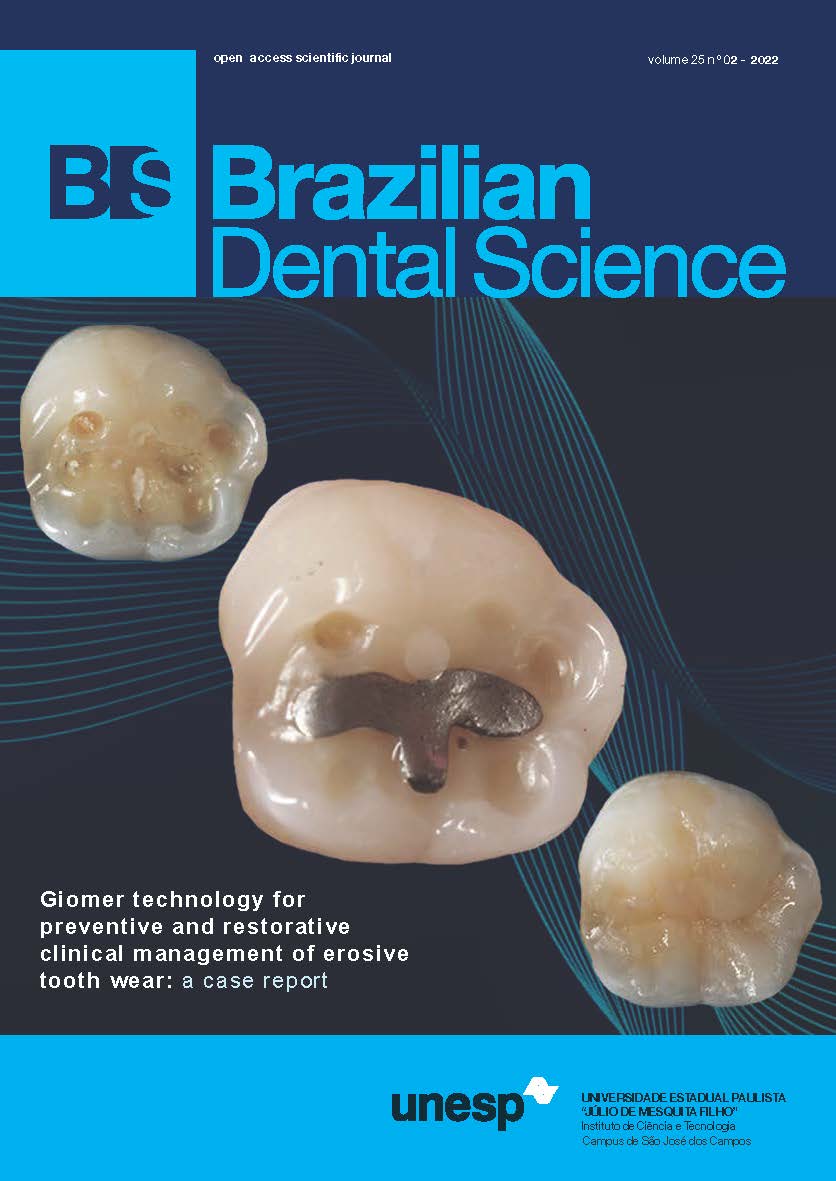Effectiveness of an educative ergonomic plan in reducing musculo-skeletal disorders among dental practitioners
DOI:
https://doi.org/10.4322/bds.2022.e2483Abstract
Objective: Work related musculo skeletal disorders (WMSD) are very common among dental practitioners who use
precise hand-wrist motions and prolonged static postures. The aim of this study was to develop an educative ergonomic
plan and test its effectiveness in reducing symptoms of musculo-skeletal disorders among dental practitioners.
Material and Methods: This study was conducted on a random sample of 50 dental practitioners of both genders
(25 male, 25 female) practising for more than 4 years in urban Bengaluru, India and showing symptoms of neck
pain, back pain or wrist pain. In the first round of the questionnaire data was collected from all 50 dentists. Next
an educative ergonomic plan was developed which included simple exercises and recommendations in the form of
do’s and don’ts. The study population were asked to follow the guidelines given and perform the exercises given
in the poster daily for a period of 3 months. Then, the questions were again asked. The differences in responses
during the first stage and second stage were analyzed. Results: The use of the ergonomic plan led to a statistically
significant improvement in certain ergonomic practises such as practise of changing their positions during clinical
practice, keeping shoulders and arm at correct level while working and keeping instruments within hand reach.
There was a statistically significant reduction in pain levels after the use of the ergonomic plan. Conclusion: The
ergonomic plan in the form of recommendations and exercises were an effective tool in improving ergonomic
practises and reducing the symptoms of musculoskeletal disorders among dental practitioners.
KEYWORDS
Ergonomics; Musculoskeletal disorders; Wrist pain; Back pain; Neck pain.
Downloads
Downloads
Published
How to Cite
Issue
Section
License
Brazilian Dental Science uses the Creative Commons (CC-BY 4.0) license, thus preserving the integrity of articles in an open access environment. The journal allows the author to retain publishing rights without restrictions.
=================




























